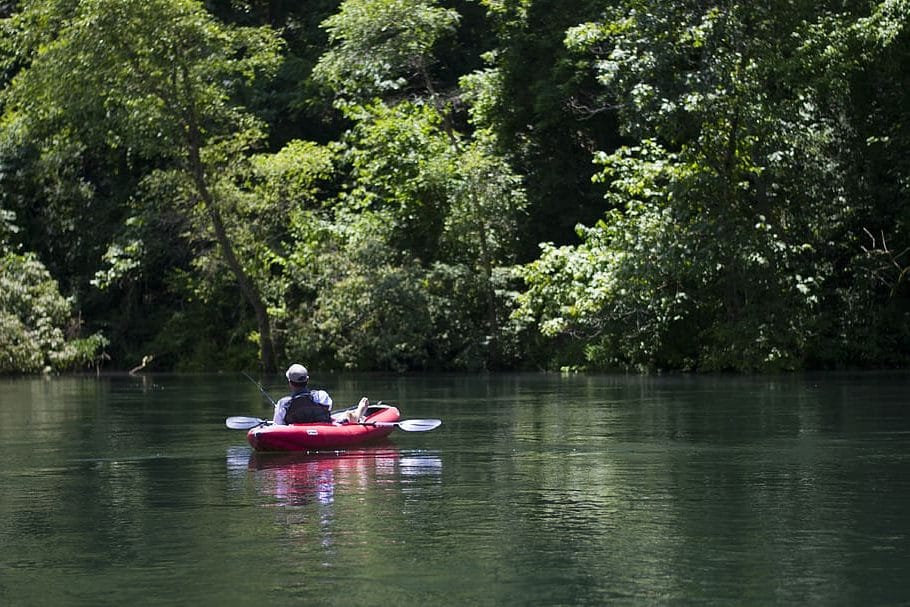In general, fishing kayaks are heavier than other types of recreational kayaks. They come in a selection of different weights but usually weigh between fifty and one hundred pounds.
Fishing kayaks need to be heavier than recreational kayaks as it’s likely that you’ll be leaning over the side to pull in fish. They, therefore, need to be stable and weighty so that they don’t easily capsize. Some fishing kayaks are so sturdy that you’ll even be able to stand up in them.
The actual weight of a fishing kayak will depend on how long and wide it is and whether or not it has accessories included.
Kayak Weight
The average fishing kayak is 10 feet in length and made from High-Density Polyethylene. A kayak of this type will likely weigh about 55 pounds.
However, fishing kayaks come in all shapes and sizes, and if you choose to buy a heavier or broader kayak, it’s likely to weigh between one hundred and a hundred and twenty pounds. Wider kayaks are great if you want to be able to stand as well as sit in your kayak while fishing. The wider kayaks are heavier but also more stable, making them perfect for fishing.
Materials and Production Processes
The material that a kayak is made from will determine its weight. Most kayaks have been created using plastic of varying densities. The manufacturing process used to create the kayak will also affect its weight. Plastic kayaks are made using High-Density Polyethylene, which has been either Rotomolded or thermoformed.
Rotomolded Kayaks
Rotomolding is a production process where plastic beads are melted in a hull mold to create the shape of the kayak. The melted plastic is spread evenly across the mold’s surface by rotating it before being left to cool. Rotomolding produces very strong kayaks, which are also on the heavier side.
Rotomolded fishing kayaks usually weight one hundred pounds or more. These types of kayaks are generally ten feet long and broader, which makes then strong and sturdy. They often have built-in accessories, which adds to the weight.
These types of heavyweight fishing kayaks are wider and allow you to stand up while fishing or to reel in. More plastic has been used to build a heavy fishing kayak, and some have also been given extra stabilization in the form of foam, which is added to the kayaks hulls.
Thermoforming Kayaks
Thermoforming is the other process used to create a kayak. Thin sheets of plastic are heated, and these are then formed around a kayak shape. The top and bottom of the kayak are usually made separately, and these are later fused together to create a lightweight kayak.
Kayaks that have been created by thermoforming will usually be around eight to ten feet long with a width of about 30 inches. They will usually weight in the region of forty-five to sixty pounds depending on how thick the hull is.
Conclusion
When choosing a kayak for fishing, it’s worth considering how stable you want the kayak to be. A heavyweight kayak may be better for fishing as it allows you to stand up and lean over the side if necessary. The disadvantage of this is that it will be more challenging to transport.
Choosing a lightweight kayak may be a better idea if you want to lift it onto the roof rack of your car with less difficulty. Many kayaks are lightweight and are still built for fishing. These types of kayaks should be sturdy enough and stable in the water if you’re on a calm lake or river and are fishing for small fish.
It’s also worth remembering that the weight of your kayak will increase depending on the accessories you have on board. These include a folding kayak chair, rod holders and gear tracks, and the weight of the angler themselves.
Fishing kayaks have weight capacities of up to 500 pounds, so they need to be durable and stable. Choosing a good quality fishing kayak will allow you to carry all the gear you need, and your kayak will still stay rigid and afloat.
